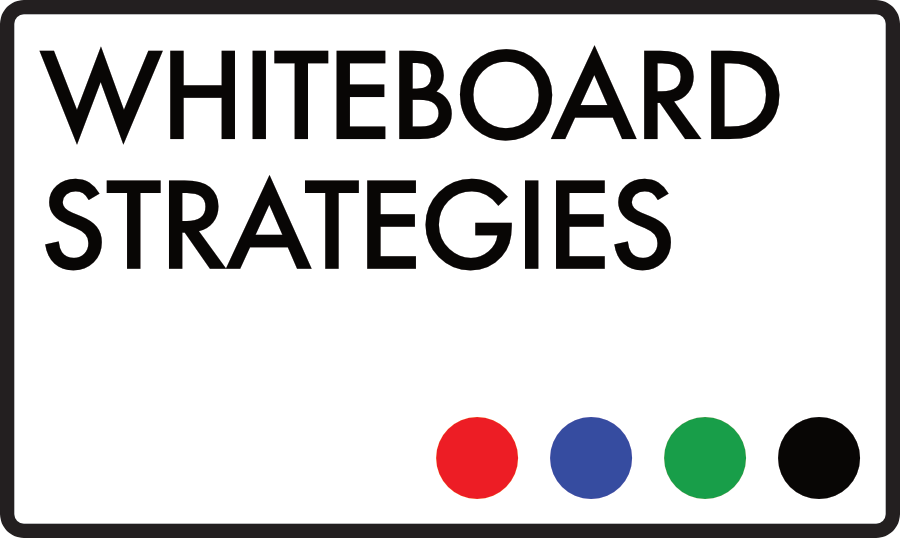Communication is the name of the game, right? Everything comes back to communication. The customer surveys, the focus groups, the R&D lab hours, product marketing strategy meetings, endless metrics, months chasing decision makers at DREAM CLIENT CORP…. it all comes down to communication. You need to have a product that people want. You need that product to be built to deliver value in the way people need it—your marketing and sales efforts are just an attempt to communicate that value to the customer. The untold hours of work from tens, hundreds, maybe thousands of people across a global technology company come down to whether or not your sales and marketing teams can communicate the following sentiment to people:
“We have built this product because you need it. Buy it and we all benefit.”
I’ve been advising and training people on using the humble office whiteboard to communicate that message to their clients and prospects for the last seven years. And it works really, really well… if your people will follow a few simple rules. In fact, it works so well in B2B tech companies that it’s becoming a mainstream part of sales enablement and product marketing programmes across the sector. What better time to pick up a few steers on improving your teams’ whiteboard skills?
Tip #1 – Challenges Engage
Challenges and tensions are a great way of engaging people quickly—so make sure your customer-facing teams are embracing them. Whether you build the start of your whiteboard presentation around your prospect’s stress points and current industry tensions, or you ensure that your teams build regular questions about tensions into their whiteboard delivery, it’s a sure-fire way of making sure your people are getting prospects interested and engaged. It also helps them to take the important step from presentation to conversation.
Tip #2 – Conversation > Pitch
This is key, and an important reason why your teams should be learning their whiteboard strategy inside out. Conversation engages in a pitching situation, and ensures sales and marketing teams are informing prospects in the right way and for the right reasons. Whiteboarding isn’t about standing in front of decision makers and reeling off selling points, it’s about communicating value in a genuine and hugely effective way. Pitches bore people, conversations make money.
Tip #3 – Owning the Whiteboard
For something to work, it needs to be used. I sometimes talk about a weights bench I bought that failed to make me look like Arnie… because it sat in the garage untouched for months. Even the best tools only make a difference if you’re using them. The best way for your sales and marketing teams to take ownership of their whiteboard strategy is for them to learn it by heart. This makes the presentation much more usable, and makes it easier for reps to roll with the pitch and engage clients in genuine conversations.
Tip #4 – Simple Closes Deals
If I had a penny for every know-it-all, buzzword-spouting sales person I’ve come across in the last 25 years I’d be a rich man. But they’re not the ones making money—the ones that are closing left, right and centre are the ones who are incisive. A well structured, well delivered whiteboard helps a lot with this—recognising or discovering the prospect’s problems, cutting through the noise, and effectively communicating how they can add value. That’s what you want in a sales person. Keeping the whiteboard crisp, light and precise—and losing the waffle and buzzwords—brings those qualities out in your people.
While you may not be in a position to oversee the global roll out of your whiteboard strategy, ensuring that you are constantly steering its delivery in the right direction can make a huge difference to your teams’ conversion rates. Commit to your whiteboard strategy, and see the benefits for yourself.

Recent Comments